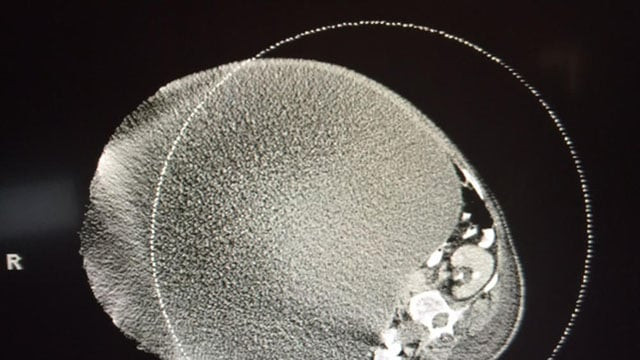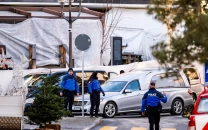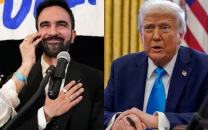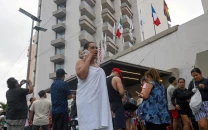Doctors remove woman's 140-pound tumour
Patient believed her snacking habit was the cause of her being overweight

PHOTO: ONLINE
Both were wrong. Inside the once-spritely grandmother was a cancerous tumour the size of, well, a whole other person — 140 pounds.
Finally, at her son's urging when she could not get out of bed, she went to the hospital. Doctors at Lehigh Valley Health Network were aghast at what they discovered.
"The CAT scan is permanently engrained in my mind," said Dr Richard Boulay, a gynecologic oncologist, he added that "I'd never seen anything the size of this before."
Clancey and Boulay recounted the dramatic story of her diagnosis, treatment and recovery.
Clancey, 71, had tried dieting to no avail. At just over 5 feet tall, she developed a potbelly that slowly but surely kept getting bigger and bigger over the course of a decade and a half.
She said she resigned herself to the idea that, like her grandmother and aunts, she'd be "a plump, little old lady."
"I thought that was my destiny," she said. An optimist by nature, she left it at that and went about her business — socialising with the other "girls" who worked at Boscov's and playfully flirting with the young men who shopped there.
What Boulay told her required a dramatic reappraisal. She wasn't fat; she had inside her a huge malignant ovarian mass.
Imagine carrying a baby to which you never give birth, one that grows inside you into adulthood.
This World Cancer Day, let's talk about child patients
"It was slowly killing her," Boulay said, noting that by the time he saw Clancey, she could barely speak two words in a row without losing her breath because the tumour was compressing her diaphragm.
And because the tumour had restricted blood flow to her lower extremities, her ankles and feet were painfully swollen.
Extracting such a tumour would be no ordinary day in the operating room.
Two surgical teams comprising 10 doctors, nurses and other staff worked side by side — one team led by Boulay and another by plastic surgeon Dr Randolph Wojcik.
First was the tricky proposition of how to get the tumour out. Typically, such procedures are performed on a patient lying on her back.
But that would have presented Boulay with the herculean task of reaching inside of Clancey with both arms and heaving the mass out.
Did he even have the arm and back strength? Plus, he knew the tumour would be slippery, and he was not sure he would be able to get a firm grip.
Boulay recalled coming up with his game plan: "How am I going to get it out of her without rupturing it? ... One of the tenets of cancer surgery is when you take out a mass, you don't want to pop it. This is mostly fluid with a rind around it. So how can I get this out safely? ... This is going to be big. How am I going to lift this out? And I said I'm not. I'm going to have to roll it out."
During the operation, a second, slightly shorter table was wheeled into the operating room and parked next to the one on which Clancey was lying, anesthetised, on her side.
The doctors cut her open and began disconnecting the tumour from the blood vessels that had long fed it.
A photograph captured the scene just moments after the extraction: In the foreground is the tumour, its pale, shiny-smooth surface streaked in blood.
In the background are Clancey's exposed midsection and a doctor holding, with both of his hands, a flap of skin perhaps two feet long.
It was time for Wojcik, who on Thursday referred to himself as "Mary's tailor," to get busy.
A doctor’s quest against childhood cancer
The plastic surgeon removed 40 pounds of excess skin and abdominal tissue.
After initially weighing in at 365 pounds, Clancey's total weight loss over the course of five hours of surgery was 180 pounds.
As for the tumour, it was sent to the morgue, since the morgue had a scale big enough to weigh it, and then on to the pathology lab for further analysis.
After a month-long recovery in the hospital, Clancey went back home for the holidays.
Tests indicate she is cancer- free. Boulay does not expect her to need further treatment, such as chemotherapy or radiation.



















COMMENTS
Comments are moderated and generally will be posted if they are on-topic and not abusive.
For more information, please see our Comments FAQ